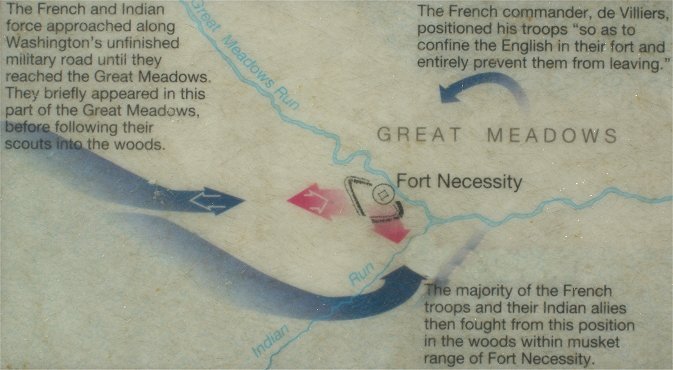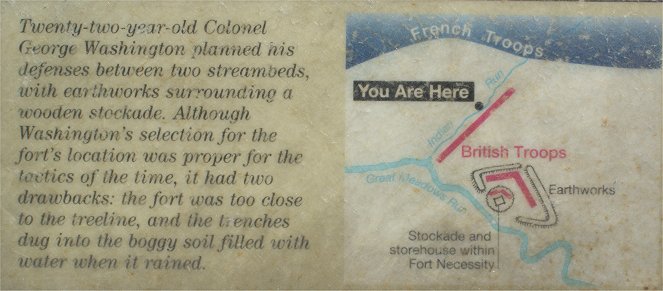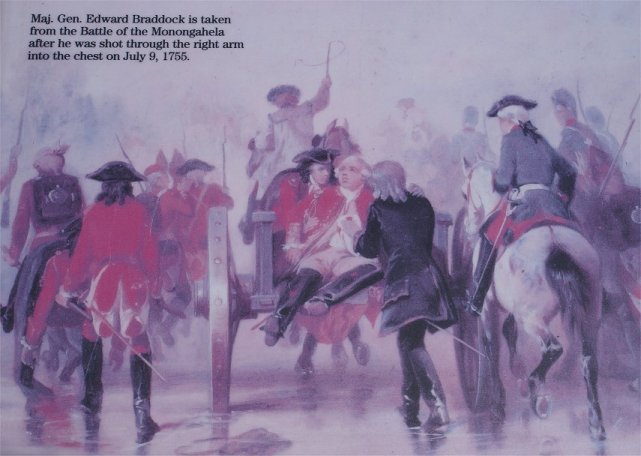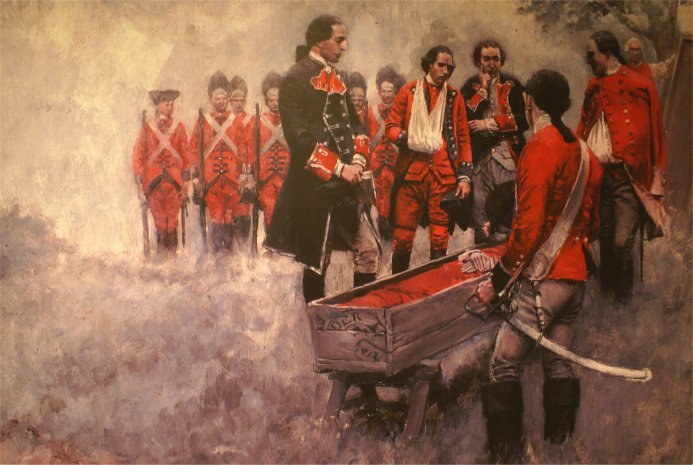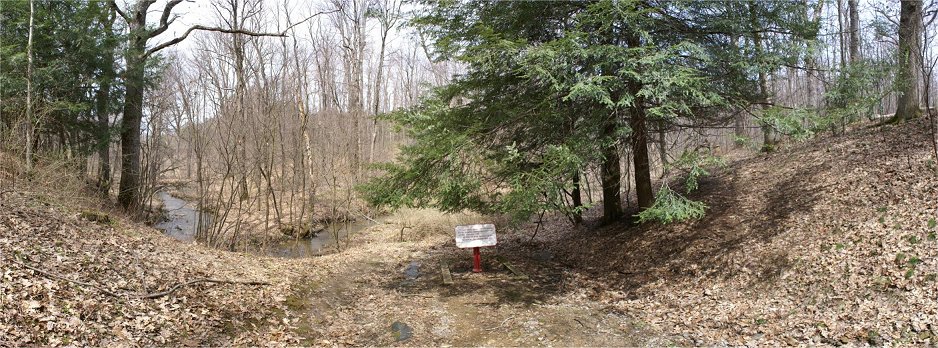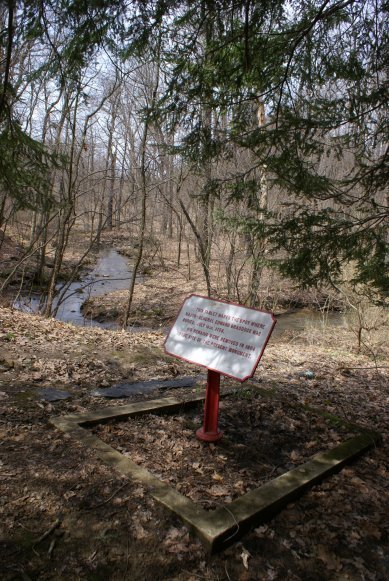Washington started building a 'fort of necessity' at a place called Great Meadows, a clearing in the forest.
When he heard that a small French force had been dispatched from Ft
Duquesne and was advancing toward him, Washington marched to meet it.
On the morning of May 28, 1754, Washington located the French
force camped half a mile off the established trail in a hollow below a
rock outcrop. Washington kept about 20 men atop the rocks under Adam
Stephen and took another twenty off to the right to flank the French
camp. A party of roughly a dozen Indians were sent to the French right
flank. When one of the French troops detected the British troops, he
sounded the alarm, and the French rushed to the muskets. Washington
ordered his men to open fire. After a fight of no more than 15
minutes, the French surrendered, except for one man who escaped to Fort
Duquesne. Washington't force lost one killed and two wounded. The
French party lost 10 killed and 21 captured.
There are few accounts of this controversial incident, and they do not
always correspond. The commander of the French party, Cpt. Jumonville,
was killed in the fight. Some accounts say that he read a diplomatic
letter at the beginning of the fight. Other accounts, including from a
French participant, make no mention. Washington himself denied that it
happened. We can only make an educated guess at the truth. The facts
that Jumonville had been away from Ft Duquesne for several days and was
camping in a remote location suggests that his mission was not wholely
diplomatic. A good argument can be made that Jumonville was given the
option to either use military force if he had the advantage or to
attempt diplomacy if he was weaker. The French called the event an assassination and used it for propoganda
purposes. |
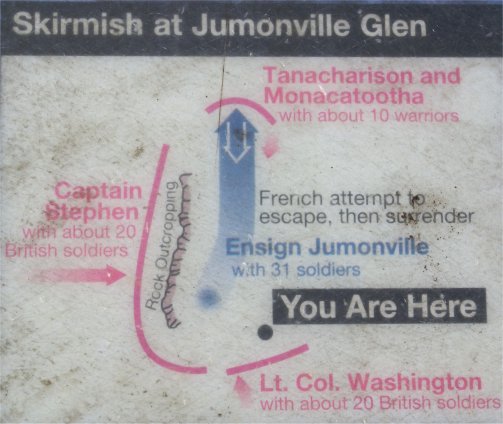 |



